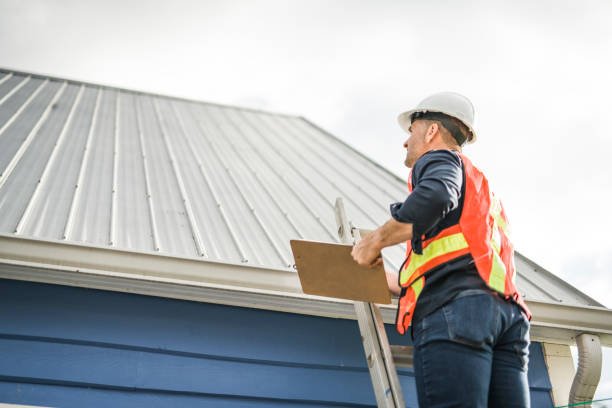When many homeowners hear the term white roofing, they often think of aesthetics — a clean, bright look that stands out from darker shingles. However, white roofing is much more than a cosmetic upgrade. It represents a strategic investment in energy efficiency, comfort, durability, and environmental sustainability. Installing a white roof can help you save on cooling costs, reduce your carbon footprint, and even extend the lifespan of your roof.
Understanding White Roofing
White roofing, also known as a “cool roof,” refers to roofing materials designed to reflect more sunlight and absorb less heat than standard dark roofing. This can include reflective coatings, white membranes, tiles, or metal panels that bounce sunlight away from the roof surface. The primary goal of white roofing is to lower the amount of heat transferred into your home, which helps keep indoor temperatures cooler during hot months. By reflecting a significant portion of solar energy, white roofs reduce thermal load on the building, which in turn lessens the demand on air conditioning systems.
Energy Efficiency and Cost Savings
One of the most compelling reasons to choose white roofing is its potential to reduce energy consumption and lower utility bills. Homes with white roofs can experience a notable decrease in cooling costs because the roof surface remains cooler than traditional dark-colored roofs. This reduction in heat absorption means your air conditioning system doesn’t have to work as hard to maintain comfortable indoor temperatures. In many cases, white roofing can decrease energy usage for cooling by 10% to 30%, depending on the climate, insulation, and roof structure.
Additionally, white roofs help prevent heat-related stress on roofing materials. By maintaining a cooler surface temperature, these roofs reduce expansion and contraction cycles caused by heat. Over time, this translates into fewer repairs, longer roof life, and lower maintenance costs, making white roofing not just an energy-efficient option but also a smart long-term investment.
Environmental Benefits
White roofing has positive implications beyond your own home. Urban areas often experience the “heat island effect,” where densely built neighborhoods become significantly hotter than surrounding rural areas due to dark, heat-absorbing surfaces. White roofing can mitigate this effect by reflecting sunlight and reducing the amount of heat transferred into the surrounding environment.
Furthermore, reflective roofs contribute to lower greenhouse gas emissions. When air conditioning demand is reduced, less electricity is required from power plants, which often burn fossil fuels. By helping to lower energy usage, white roofing indirectly reduces carbon dioxide emissions, supporting broader environmental sustainability goals.
Material Options for White Roofing
White roofing comes in a variety of materials and installation methods, allowing homeowners to choose the option that best suits their building type and budget. Common options include:
-
Flat or low-slope roofs: These are particularly well-suited for white roofing. Materials like white single-ply membranes, elastomeric coatings, or reflective paints can provide excellent solar reflectivity and durability.
-
Pitched roofs: Even sloped roofs can benefit from light-colored tiles, cool shingles, or metal panels with reflective coatings.
-
Retrofit coating: For existing roofs, applying a reflective coating can be a cost-effective way to gain many of the benefits of white roofing without a full replacement.
Each material comes with its own advantages in terms of reflectivity, longevity, and maintenance requirements, so it’s important to choose the one that aligns with your climate and roofing needs.
Potential Drawbacks and Considerations
While white roofing offers numerous benefits, it is important to consider potential drawbacks to make an informed decision:
-
Winter heating: In colder climates, white roofs reflect more sunlight, which could slightly increase heating requirements during winter. However, the overall energy savings during hot months often outweigh this drawback.
-
Maintenance requirements: To maintain reflectivity, white roofs should be kept clean. Dirt, debris, and algae can reduce their reflective properties over time. Regular cleaning may be required, especially in areas with high dust or pollution levels.
-
Initial costs: Some white roofing materials may have higher upfront costs than traditional dark shingles. However, energy savings, reduced maintenance, and extended lifespan typically offer a favorable return on investment over time.
Comfort and Home Value
A cooler roof surface directly translates to more comfortable indoor living conditions. White roofing can reduce the heat radiating into your attic and living spaces, preventing rooms from becoming excessively hot during summer. For homeowners in regions with high temperatures and intense sunlight, this can significantly enhance comfort and reduce dependence on air conditioning.
Additionally, installing a white roof may increase the resale value of your home. Energy efficiency and sustainable features are increasingly important to buyers, and a reflective roof is a tangible, marketable upgrade that demonstrates environmental responsibility and cost savings potential.
Community Impact
The benefits of white roofing extend beyond individual homes. When multiple buildings in a neighborhood adopt cool roofs, the overall temperature of the area can be reduced. This contributes to lower urban heat levels, decreased energy demand on power grids during peak times, and even reduced air pollution caused by high electricity consumption. On a larger scale, widespread adoption of white roofing can play a role in promoting community resilience, improving urban sustainability, and combating climate change.
Is White Roofing Right for You?
White roofing is an excellent option for homeowners looking to improve energy efficiency, reduce cooling costs, and support sustainability initiatives. Homes in hot or sunny climates see the most immediate benefits, but even in moderate climates, reflective roofs provide advantages in comfort, maintenance, and long-term value. Before deciding, consider your roof type, local weather patterns, and energy usage goals. Consulting a professional roofing company can help determine the best white roofing solution for your home.
How Willowash Roofing Can Help
At Willowash Roofing, we specialize in innovative roofing solutions tailored to your home and environment. Our experienced team can guide you through the selection, installation, and maintenance of white roofing, ensuring that you enjoy maximum benefits in energy savings, durability, and environmental impact. Whether you are building a new home or upgrading your existing roof, Willowash Roofing is committed to helping you make the smartest roofing choice for your family and your budget.
Choosing white roofing is not just about aesthetics — it’s about making a sustainable, energy-efficient decision that pays off over time. If you are considering a white roof, our experts at Willowash Roofing can provide guidance, materials, and professional installation to help you enjoy a cooler, more efficient, and long-lasting roof for years to come.
visit; zynreward




Leave a Reply